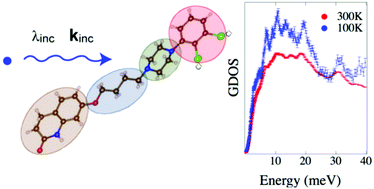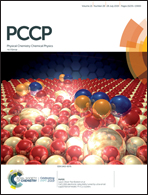Hydrogen bond dynamics and conformational flexibility in antipsychotics†
Abstract
Effective treatment of disorders of the central nervous system can often be achieved using bioactive molecules of similar moieties to those known to be tolerable. A better understanding of the solid-state characteristics of such molecules could thereby create new opportunities for research on pharmaceutical preparations and drug prescriptions, while information about their rich intramolecular dynamics may well add an important aspect in the field of in silico drug discovery. We have therefore investigated three different antipsychotic drugs: haloperidol (C21H23ClFNO2, HAL), aripiprazole (C23H27Cl2N3O2, APZ) and quetiapine hemifumarate (C21H25N3O2S·0.5C4H4O4, QTP) based on similarities either in their structures, hydrophobic and hydrophilic moieties, or in their modes of action, typical or atypical. Our aim was to test the structural and molecular stability of these three different antipsychotics. To this end, we compared the molecular vibrations observed by inelastic neutron spectroscopy of these systems with those from theoretical periodic calculations of the crystalline antipsychotics using the Vienna ab initio simulation package (VASP). While most of the observed features in the lattice region were reasonably well represented by the calculations, the overall spectra were relatively complex, and hence traditional assignment procedures for the approximately 600 normal modes in the unit cell were not possible. These results indicate that in the search for new drug candidates, not only analysis of the flexibility of the receptor, but also the dynamics of the active molecules play a role in improving the prediction of binding affinities.



 Please wait while we load your content...
Please wait while we load your content...
